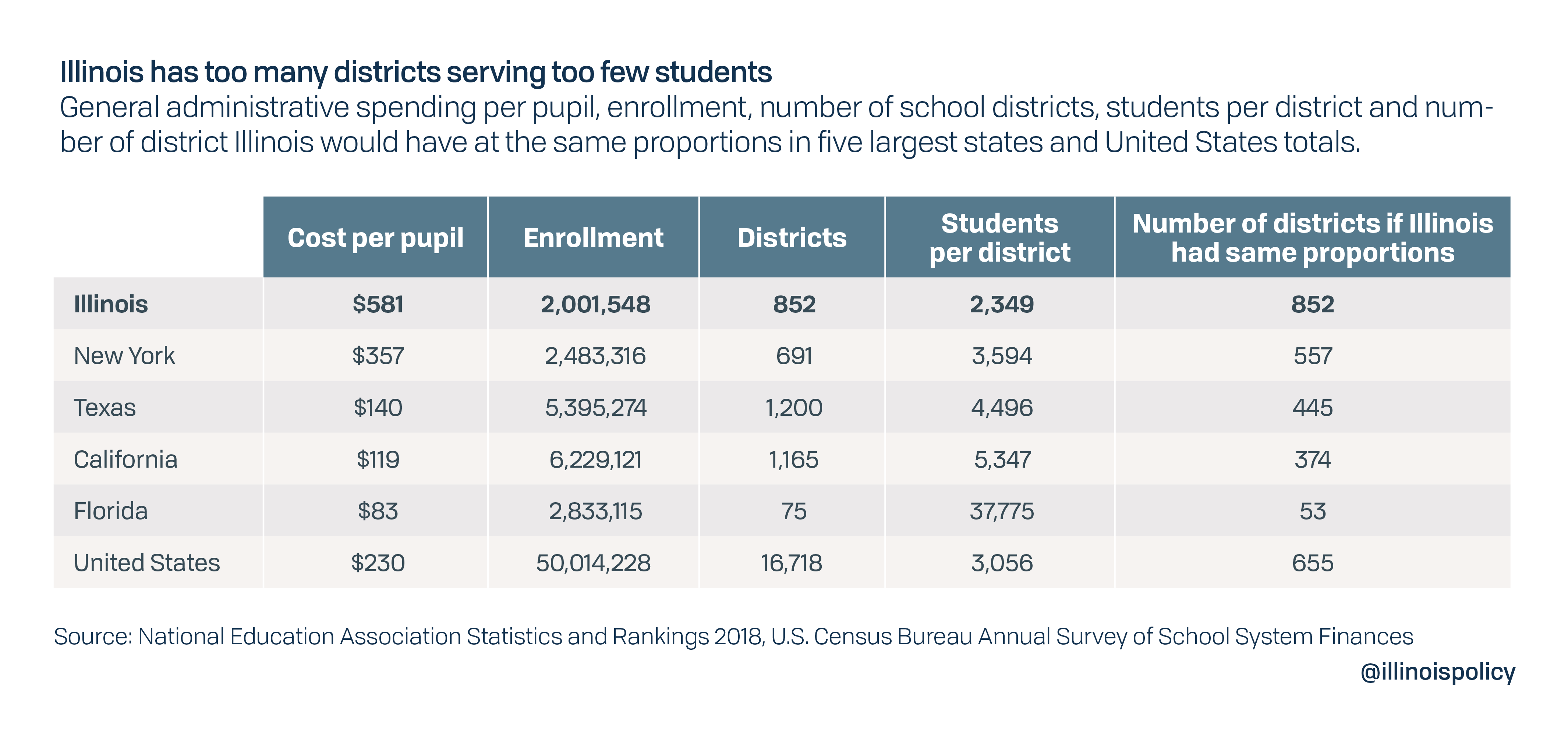Illinois wastes taxes supporting too many school district bureaucracies
Illinois could put $708 million more toward classrooms or property tax relief if it reduced school district bureaucracy to national average.
The goal of public education should be to ensure that every student has the opportunity to maximize his or her full potential. Unfortunately, the Prairie State currently falls short of this goal because of a top-heavy education bureaucracy diverting resources that should rightly be going to classrooms for teachers and students.
Illinois is the only state that spent more than $1 billion on district-level administrative costs in 2017, the most recent year of data available from the U.S. Census Bureau. California has three times as many students, but spent nearly 40% less than Illinois on district administration. This spending only represents costs of the superintendent and school board. It does not include administrative spending within schools, such as on guidance counselors or principals.
Illinois spends $581 per student on district-level administration, more than double the national average of $230.62. If Illinois reduced its general administrative spending to the national average per student, it would save $708 million in unnecessary costs that could be reinvested in classrooms to improve student outcomes or returned to overburdened property taxpayers.
The reason for this overspending is simple: Illinois has too many school districts serving too few students. Four other states have student populations above 2 million, and each of them serves significantly more students for each administrative body overseeing its schools.

Illinois must consolidate school districts to reduce unnecessary administrative spending. Each district comes with highly paid superintendents, support staff and costly facilities. If districts serve more schools and more students, they can achieve economies of scale and greater efficiency without losing services.
State Rep. Rita Mayfield’s House Bill 4005 would put in motion a plan to rightsize the number of districts to ensure education dollars flow to classrooms instead of propping up administrative bloat.